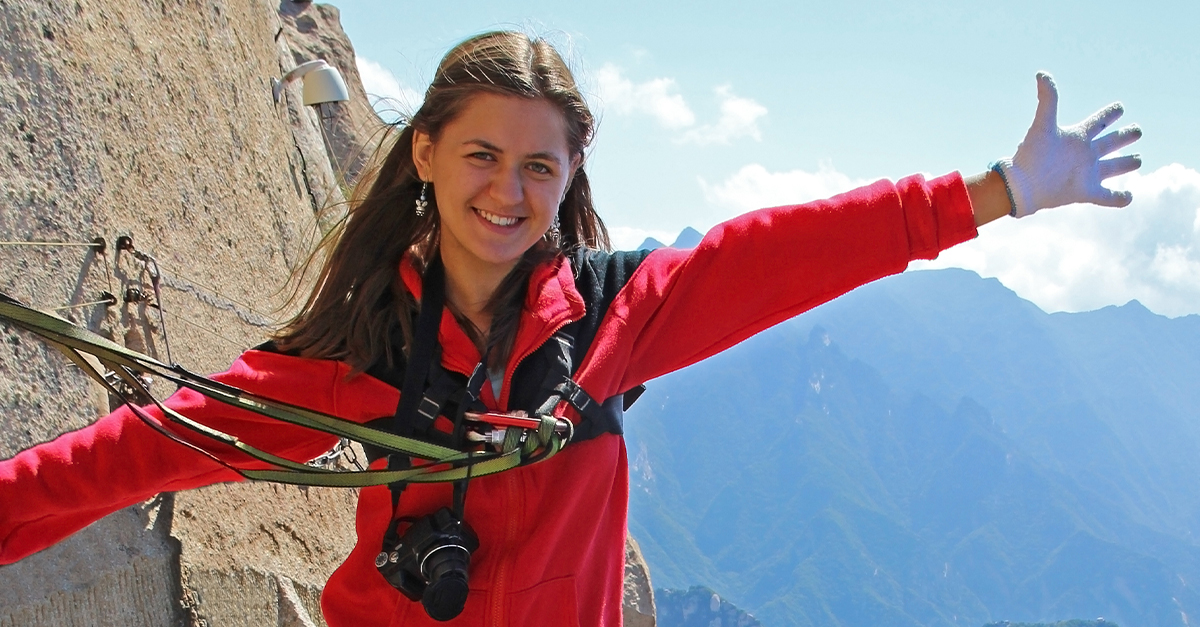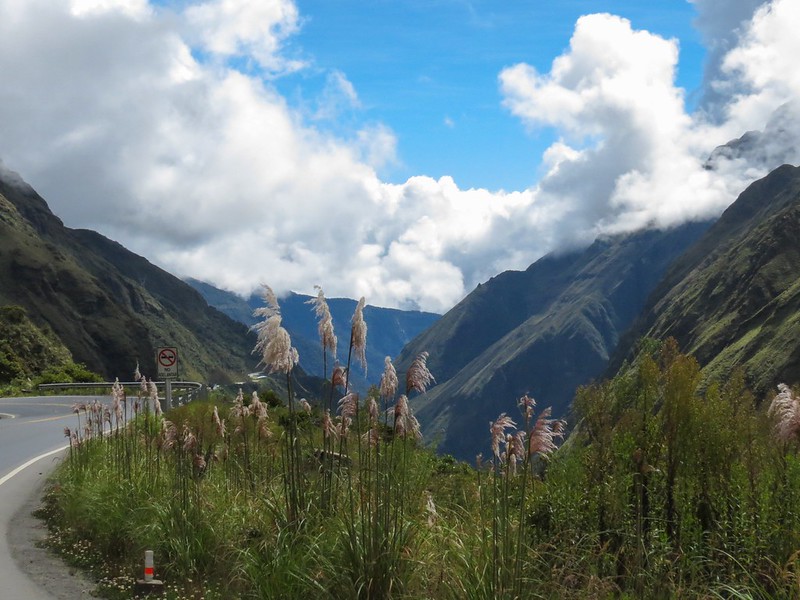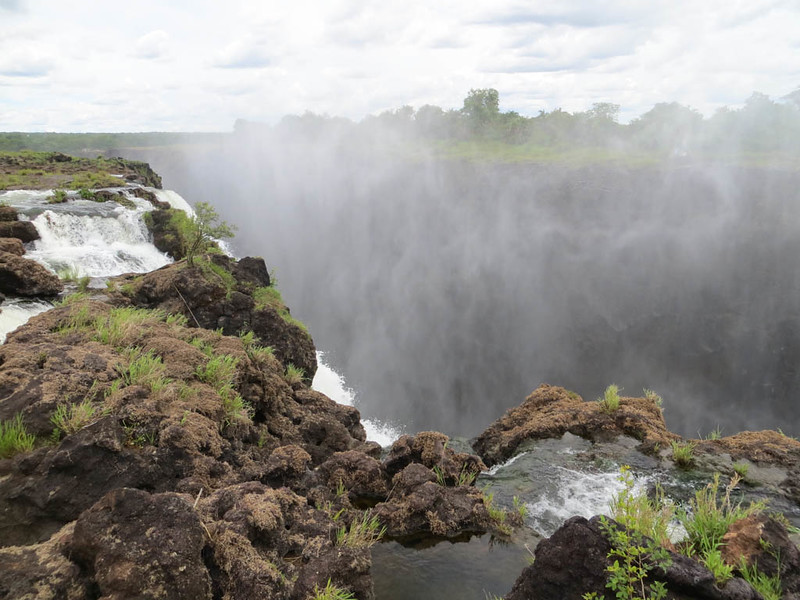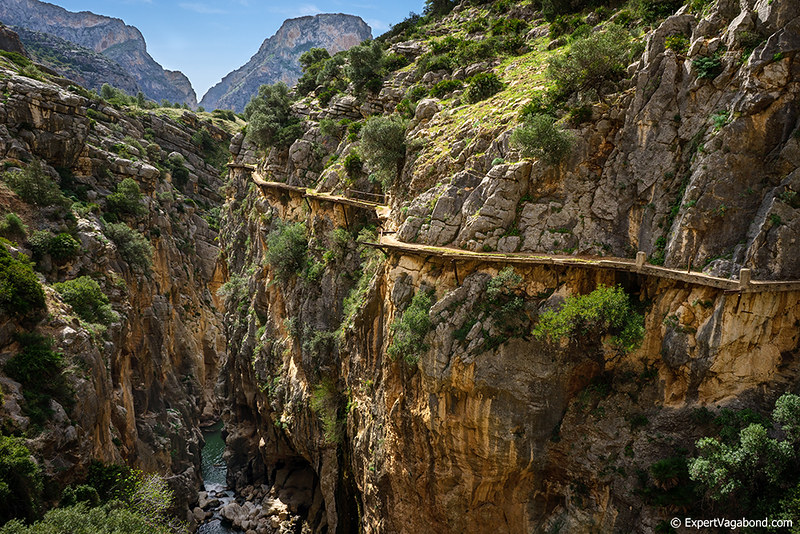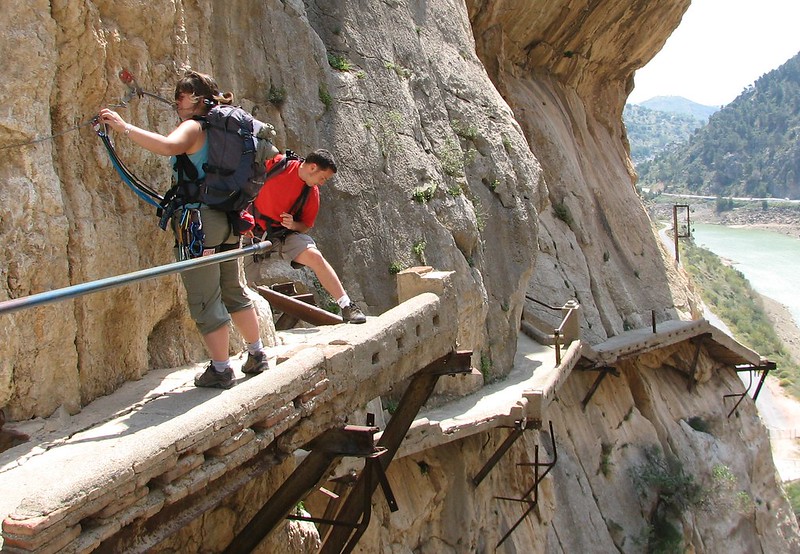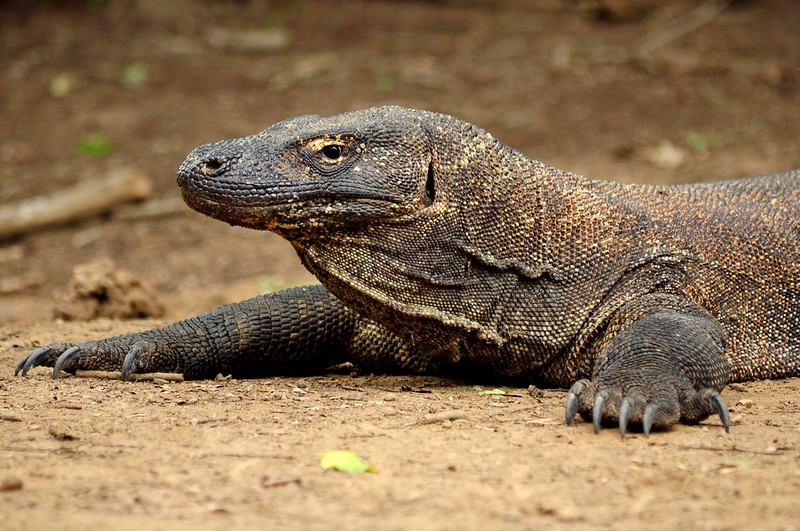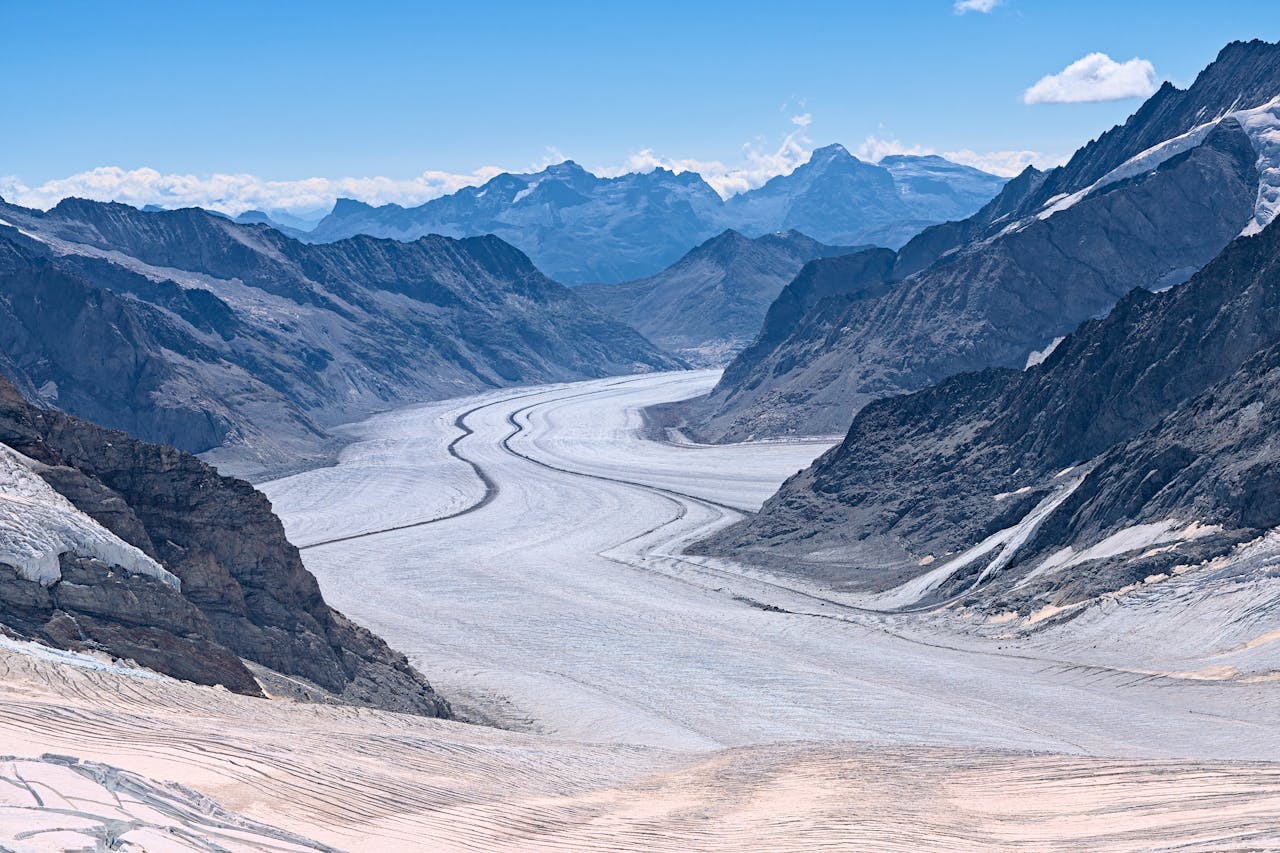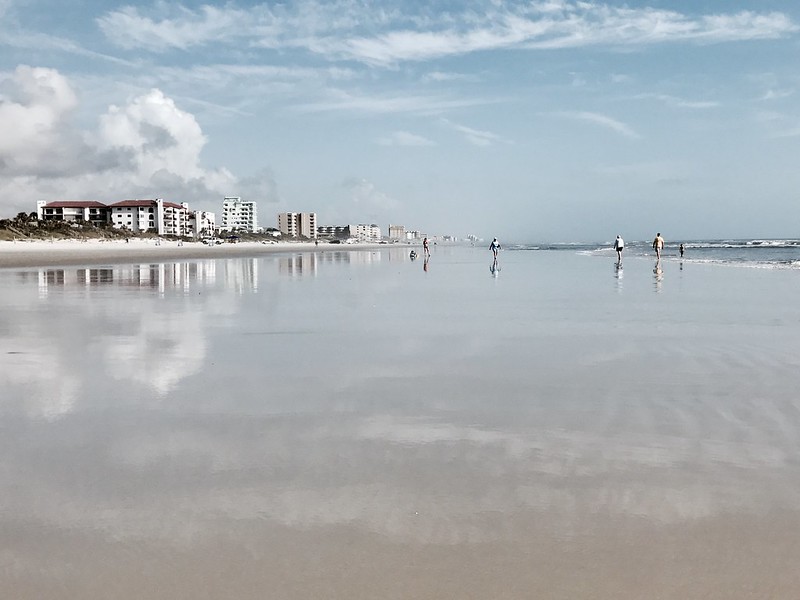Would You Take The Risk?
Are you a thrill seeker or an adventurer—a skilled hiker or mountaineer? Do you love feeling the rush of adrenaline? If so, I wouldn't be surprised if some of these dangerous attractions are on your bucket list.
But though these fascinating destinations might seem worth the risk for some—the hard truth is that they're not for everybody. In fact, some might even say, "Absolutely not. No way."

Mount Everest
Location: Nepal/Tibet
For the avid mountaineer, the ultimate achievement might be climbing Mount Everest. However, the trek to its infamous peak is unbelievably dangerous. Deadly weather conditions and high altitudes can easily become a recipe for disaster.
Mount Everest: The "Death Zone"
Standing at 29,032 feet above sea level, Mount Everest is not a tourist adventure to be taken lightly. At a certain height, climbers will enter what is known as the "Death Zone"—and sadly, many have suffered its chilling consequences.
Mount Everest: Not Enough Oxygen
In Everest's "Death Zone"—at around 26,000 feet—the human body struggles to adapt to the oxygen pressure. Basically, it uses oxygen too quickly, which can't be replenished in time. This results in altitude sickness.
Mount Everest: Altitude Sickness
There are varying degrees of altitude sickness. Some may experience symptoms like dizziness or nausea, but others are doomed. Altitude sickness can be fatal. However, the dangers of Mount Everest don't end there.
Mount Everest: Avalanches And Exposure
Mountaineers also have to be wary of avalanches, and horrifyingly, they can be difficult to predict. Many Everest enthusiasts have been blindsided by avalanches, as well as catastrophic falls, frostbite, and health issues related to exposure.
Death Road
Location: Bolivia
Have you ever heard of Death Road? Located in Bolivia, traveling along Death Road—or Yungas Road—will give tourists access to the most stunning vistas imaginable. You'll be able to see the Andes in all their glory. But you'll also have to ask yourself, "Is this really worth it?"
Death Road: Too Narrow
Yungas Road is called Death Road for a reason. It is wildly dangerous because it is far too narrow. Even a single car has difficulty comfortably fitting on it. At some points, the road's width is just three meters. Obviously, this makes traffic a downright nightmare.
Death Road: No Guardrails
In addition to the narrow roads, you have to take into account that there are no guardrails. Yungas Road is steep and has no safety precautions. Falling off of it leads to a chilling drop of 2,000 feet. Of course, it's even more dangerous when the weather is bad.
Death Road: Dangerous Conditions
If you're traveling along Yungas Road while its raining or foggy, then you're really risking it all. The slippery mud and loosened ground would make driving all the more difficult. One wrong move, and it's all over.
Considering the risk, it's no wonder the road has such a tragic reputation.
Death Road: Hundreds Of Fatalities
Hundreds of drivers have steered their vehicles off the cliff by accident. For instance, one of the worst tragedies the road ever saw was when a bus carrying over 100 people fell into the canyon in July 1983.
Death Road: A Magnet For Mountain Bikers
Yet, somehow—despite it's absolutely brutal history—Yungas Road is still a tourist attraction. It manages to attract about 25,000 tourists on an annual basis. What's more? It's a very popular destination for downhill mountain bikers.
Since 1988, 18 cyclists have lost their lives while adventuring on Death Road.
The Devil’s Pool
Location: Zambia
Victoria Falls can be found on the border between Zimbabwe and Zambia. As one of the world's natural wonders, the stunning waterfall is major tourist destination. However, it also happens to boast a very attractive but terrifying attraction: The Devil's Pool.
The Devil’s Pool: Right On The Edge
The Devil's Pool is an infinity pool set right on the edge of the falls—and it certainly isn't for the faint of heart. Following a guide's instructions, the brief swim to the pool is considered safe. But there are other dangers to consider.
 Boundless Southern Africa, Flickr
Boundless Southern Africa, Flickr
The Devil’s Pool: Threatening Animals
One must really trust their guide in order to enjoy The Devil's Pool. The Zambezi river that you have to navigate to reach the pool is home to hippos and crocodiles. It's the guide's job to ensure the waters are clear of these potential dangers before visitors can venture forth.
The Devil’s Pool: A Risky Lookout Point
The Devil's Pool itself is not made for those who fear heights as the currents will move you right to the edge. You'll be able to experience the falls at the point where all the water goes crashing over the cliff. Of course, this particular attraction is only open during specific times of the year.
El Caminito del Rey
Location: Spain
Would you ever visit what was once called the "the world's most dangerous walkway?" In 1999 and 2000 there were five deaths at El Caminito del Rey, which is located near Andalusia.
El Caminito del Rey: Unbelievable Heights
El Caminito del Rey is a popular tourist attraction for a good reason. For thrill seekers, it's the perfect combination of terrifying heights and jaw-dropping views.
El Caminito del Rey: A Need For Repairs
Originally built in the early 20th century, this walkway deteriorated over time, becoming incredibly dangerous during the 21st century. After multiple people lost their lives, the government finally took action and shut it down for repairs.
El Caminito del Rey: Vertigo Central
Strung up at a height of 330 feet, this eight-kilometre aerial path might be too intimidating for some tourists. If you suffer from vertigo or are terrified of heights, you should definitely steer clear of this attraction.
Komodo Island
Location: Indonesia
Komodo dragons aren't exactly the most cuddly of beasts—they're massive lizards and their bites are venomous. And yet, some people still want to visit Komodo Island in Indonesia.
Komodo Island: For Reptile Enthusiasts
Around 6,000 Komodo dragons can be found on the island, which is also a popular destination for divers. If you just so happens to be a reptile enthusiast then this island might be on your bucket list—but be warned...
Komodo Island: Fatal Attacks
Komodo dragons are not to be messed with. Keep in mind that from 1974 to 2012, there were 24 reported attacks—and five people lost their lives.
Komodo Island: Stay Together
Park rangers help upkeep Komodo National Park—and they do tell visitors to take safety precautions. For instance, if you spot a Komodo dragon don't maintain eye contact with them. It's even recommended that people buddy up when going to the restroom.
Komodo Island: The Can Smell Blood
Komodo dragons also have a keen sense of smell. That's why women on their period have to be extra careful, because their blood is likely to attract these venomous lizards.
Mount Huashan Plank Walk
Location: China
The Mount Huashan Plank walk is considered "the most dangerous hiking trail in the world"—and for good reason. Constructed over 700 years ago, visitors scale the mountain by walking along a path made of very narrow wooden planks. But that's not all.
Mount Huashan Plank Walk: Don't Slip
While walking this trail, there is only one safety rope between you and 7,000 feet of open air. If your rope is not properly secured, and you slip, or take a wrong step—you're a guaranteed goner.
 chensiyuan, CC BY-SA 4.0, Wikimedia Commons
chensiyuan, CC BY-SA 4.0, Wikimedia Commons
Mount Huashan Plank Walk: Gorgeous Views
However, there are many people who seek the rush of adrenaline that comes with braving this perilous walk. As well, the views are breathtaking (if you're not already busy hyperventilating from fear).
 Neo, CC BY 3.0, Wikimedia Commons
Neo, CC BY 3.0, Wikimedia Commons
Mount Huashan Plank Walk: An Easy Start
The Plank Walk is just 130 meters, but its three sections offer up varying degrees of horror. The first section might give you a bit of a confidence boost because of the iron guardrails. However, the second section is enough to make anyone sweat.
Mount Huashan Plank Walk: A Vertical Descent
The middle section is almost vertical. Those who have committed to this walk have to descend a wildly steep set of "stairs," which are actually metal bars set into the side of the mountain. They will also have to cling to a metal chain for support.
Mount Huashan Plank Walk: Watch Your Step
The final, lower section is the most anxiety-inducing part of the walk. This is where you'd encounter the narrow planks. However, in some areas, there are no planks, requiring tourists to step in stone holes instead.
 Nicholas Billington, Shutterstock
Nicholas Billington, Shutterstock
Mount Huashan Plank Walk: It Isn't 100% Safe
People who suffer from acrophobia—a fear of heights—are not allowed to attempt this insane walk. Reportedly, a rumored 100 people per year lose their life while visiting this so-called attraction.
 Darren On The Road, CC BY 2.0, Wikimedia Commons
Darren On The Road, CC BY 2.0, Wikimedia Commons
Danakil Depression
Location: Ethiopia
The Danakil Depression in Ethiopia looks like it's straight out of your favorite science fiction or fantasy novel. It's been referred to as a "a gateway to hell" and "land of death." But despite these terrifying labels, it's still one of the country's most popular attractions.
 Araştırmacı Ekanrın, CC BY-SA 4.0, Wikimedia Commons
Araştırmacı Ekanrın, CC BY-SA 4.0, Wikimedia Commons
Danakil Depression: A Sweltering Experience
Though the Danakil Depression is over 400 feet below sea level, it also one of the world's most sweltering destinations. On a day-to-day basis, the temperature often hovers around 94 F. However, it can also climb to an unbearable 122 F.
And, of course, it barely rains.
Danakil Depression: Stinky Springs
But though it's too toasty for comfort, the depression boasts a colorful display of yellow and green sulfur springs. Sure they may smell absolutely disgusting, but nevertheless, tourists are fascinated by the sight of them.
 Achilli Family | Journeys, Flickr
Achilli Family | Journeys, Flickr
Danakil Depression: No Match For Wildlife
The stunning hot springs have been called "killer lakes" and are no match for wildlife. Birds and insects often fall victim to them, as well as the content of carbon dioxide in the air. It's not unusual to see animals that have perished close to the springs.
Therefore, they also pose a hazard to humans.
 Achilli Family | Journeys, Flickr
Achilli Family | Journeys, Flickr
Danakil Depression: No Swimming Here
The springs in the Danakil Depression have a very low pH of 0.2—and should not be touched. Just think: battery acid has a pH of 1.0.
Danakil Depression: Don't Go Alone
As an inexperienced tourist, having a guide is essential. The terrain can be perilous as the salt crust makes for a rocky adventure. It's also important to note that armed guards will likely accompany you during some parts of your journey.
 Achilli Family | Journeys, Flickr
Achilli Family | Journeys, Flickr
Danakil Depression: Plan Ahead
If you do decide to make the trip to the Danakil Depression, the best time to visit would be from November to March as the temperatures are the most comfortable you're going to get.
 Achilli Family | Journeys, Flickr
Achilli Family | Journeys, Flickr
Aletsch Glacier
Location: Switzerland
As the most formidable glacier in the Alps, Aletsch Glacier is an undeniable real-life masterpiece to behold. But though the glacier may seem serene and peaceful, there are hidden dangers everywhere.
Aletsch Glacier: Hidden Chasms
The glacier mainly attracts climbers and hikers in search of their next great adventure. But a good time can quickly turn tragic if there's a concealed crevasse or chasm that isn't spotted in time.
Aletsch Glacier: Shifting Ice
The glacier's shifting ice means uncertainty is guaranteed. Even the most skilled professionals can easily make the wrong move—and fall down a crevasse. This can lead to a severe injury, or even death.
Aletsch Glacier: Proper Preparation
Those who explore Aletsch Glacier have to be prepared in every way. They must have the right training and equipment. There's no going in blind. Hikers should always have an educated guide.
New Smyrna Beach
Locaton: Florida
A beautiful beach in Florida? Sounds like the ultimate getaway, right? Well, think again. If you're the type to always envision the worst case scenario, swimming at New Smyrna Beach might not be for you.
New Smyrna Beach: Shark-Bite Capital
With the unfortunate reputation of being the "shark bite capital of the world," New Smyrna Beach has a dark history.
New Smyrna Beach: Hundreds Of Incidents
Overall, there has been a 250 shark attacks reported—and tragically, the years 2007 and 2008 were the worst in regard to the frequency of shark bites. Over the last three decades, sharks have been responsible for 40 fatalities.

New Smyrna Beach: Take A Risk?
On the surface, however, New Smyrna Beach is undoubtedly enticing. There's a seaside boardwalk, as well as excellent boutique shopping and delightful restaurants... But is swimming in the water worth the risk?
I say, "No way!" But clearly, many tourists aren't dissuaded about taking a dip in shark-infested waters.
The Festival Of San Fermín
Location: Spain
In the city of Pamplona, Spain, the festival of San Fermín goes on for an entire week. Though there are many traditional events to take part in, the main attraction is undoubtedly the treacherous running of the bulls.
The Festival Of San Fermín: Broadcast To Everyone
The running of the bulls is so popular that it even gets broadcast, but perhaps this adoration is rooted in the adrenaline rush that comes from seeing people put themselves in such obvious danger.
The Festival Of San Fermín: Thousands Of Participants
The run is 875 meters. Six bulls are let loose. For every running of the bulls, there are around 2,000 eager participants—and they're all willing to pay a very high price if things go south.
The Festival Of San Fermín: Injuries Are Guaranteed
Injuries during the running of the bulls is guaranteed. Overall, there are usually 50 to 100 runners who end up injured. There's also a smaller risk of something called goring, which is when the bull's horns pierce the flesh.
 Adam Jones, CC BY-SA 2.0, Wikimedia Commons
Adam Jones, CC BY-SA 2.0, Wikimedia Commons
The Festival Of San Fermín: Risk Of Being Gored
The horns of the bull can cause serious damage, especially if they impale a runner. For instance, in 2010, nine unfortunate runners were gored by the bulls.
The Festival Of San Fermín: Don't Trip
If people fall during the event, there's a chance others will fall, causing a deadly pile up of runners. This can easily be fatal as victims find themselves crushed and unable to breathe.
The Festival Of San Fermín: Putting Your Life On The Line
Things will take an even darker turn if a bull runs into a pile of people who have fallen down. This particular nightmare has reportedly happened 10 times over the course of history. But overall, there have been 15 known fatalities.
 San Fermin Pamplona Navarra, CC0, Wikimedia Commons
San Fermin Pamplona Navarra, CC0, Wikimedia Commons
Machu Picchu
Location: Peru
Machu Picchu is an Inca citdael dating back to the 15th century. It is a glorious tourist attraction, but for those who haven't done their research, they may be in for a sickening surprise... literally.
 Latin America For Less, Flickr
Latin America For Less, Flickr
Machu Picchu: It's Hard To Breathe
The air is very thin at Machu Picchu because of the altitude: 7,972 feet. Those who aren't used to this elevation might suffer altitude sickness. Nausea and headaches aren't unusual, but in some serious situations, it can even be fatal.
Machu Picchu: Slippery Stones
Along with altitude sickness, there are some physical dangers. Machu Piccchu is quite steep. Tourists should take extra care when navigating the stones, especially in inclement weather. You have to wear non-slip shoes and always stay on the appropriate path—no wandering off in search of your own adventure. At Machu Picchu, you have to play by the rules.
 Pedro Szekely, CC BY-SA 2.0, Wikimedia Commons
Pedro Szekely, CC BY-SA 2.0, Wikimedia Commons
Machu Picchu: Natural Disasters
Any fatalities at Machu Picchu have been caused by floods, hiking accidents, and—as already mentioned—altitude sickness. Other risks include potential earthquakes and landslides.
Madidi National Park
Location: Bolivia
Tourists who long to experience the Amazon rainforest may choose to visit the Madidi National Park in Bolivia. With no internet or working phones, it is an experience unlike any other. Disconnecting from the rest of the world might give one a sense of freedom, while it might make others feel anxious and untethered.
Madidi National Park: Watch Out For The Wildlife
The Madidi National Park is a gorgeous lush paradise, but jungles are known for their hidden perils. The dangerous wildlife is the ultimate risk.
 Dirk Embert / WWF, CC BY-SA 3.0 DE, Wikimedia Commons
Dirk Embert / WWF, CC BY-SA 3.0 DE, Wikimedia Commons
Madidi National Park: Poisonous Enemies
Poisonous spiders, snakes, and frogs call this place their home, as well as larger predators like pumas. Even the fire ants can be a downright nightmare. As hikers work their way through the park they have to be constantly aware of their surroundings. But that's just the tip of the iceberg.
Madidi National Park: Even The Plants Are Dangerous
In addition to the animals, the plants are your enemies as well. That's why having an expert guide is so important, as they will be able to identify the poisonous plants and help hikers avoid them.

